Kia Ceed VS Kia Niro – Specs, Efficiency & Price Comparison
Find out now which car fits your needs better!
The Kia Ceed (Hatchback) is powered by a Petrol MHEV or Petrol engine and comes with a Automatic or Manuel transmission. In comparison, the Kia Niro (SUV) features a Full Hybrid or Plugin Hybrid engine and a Automatic gearbox.
When it comes to boot capacity, the Kia Ceed offers 395 L, while the Kia Niro provides 451 L – depending on what matters most to you. If you’re looking for more power, you’ll need to decide whether the 140 HP of the Kia Ceed or the 171 HP of the Kia Niro suits your needs better.
There are also differences in efficiency: 6 L vs 0.80 L. In terms of price, the Kia Ceed starts at 23100 £, while the Kia Niro is available from 28300 £.
Compare all the key specs now and find out which model fits your lifestyle best!
In the arena of compact practicality, the Kia Ceed and Kia Niro each bring unique strengths to the table. The Ceed, with its sportier stance, appeals to those seeking a dynamic driving experience paired with impressive fuel economy. In contrast, the Niro shines for eco-conscious drivers, offering hybrid and electric variants that provide the flexibility of green technology without compromising on interior space.
Kia Ceed
The Kia Ceed stands out in the compact car segment with its sleek design and impressive handling. It offers a comfortable and well-equipped interior that appeals to both drivers and passengers. With its efficient engine options, the Ceed provides a smooth and enjoyable driving experience suitable for city commutes and longer journeys alike.
details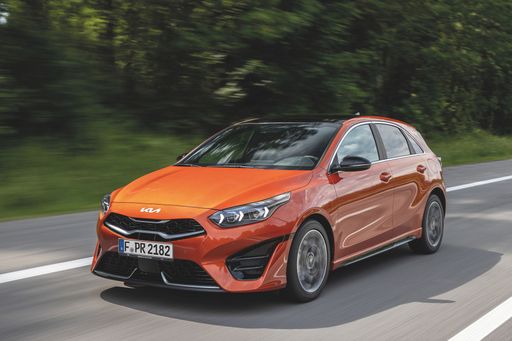 @ press.kia.com
@ press.kia.com
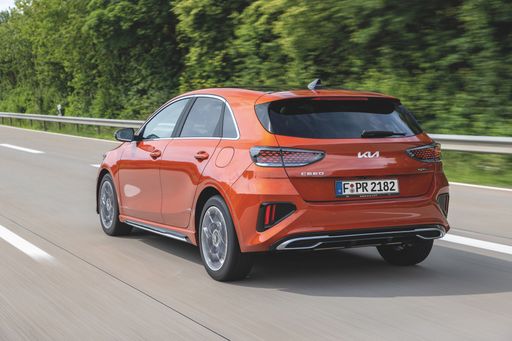 @ press.kia.com
@ press.kia.com
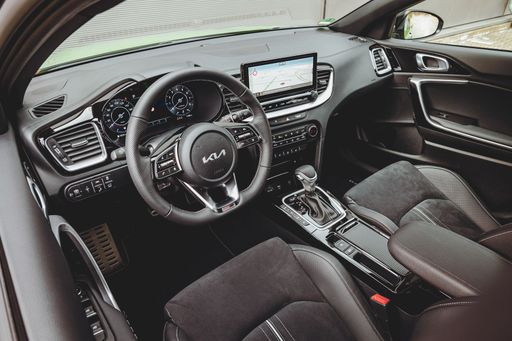 @ press.kia.com
@ press.kia.com
Kia Niro
The Kia Niro presents itself as a versatile and eco-friendly SUV, blending a stylish design with advanced hybrid technology. Its spacious interior offers comfort and practicality, making it ideal for both city driving and longer journeys. With a focus on efficiency and sustainability, the Niro is a compelling choice for environmentally conscious drivers.
details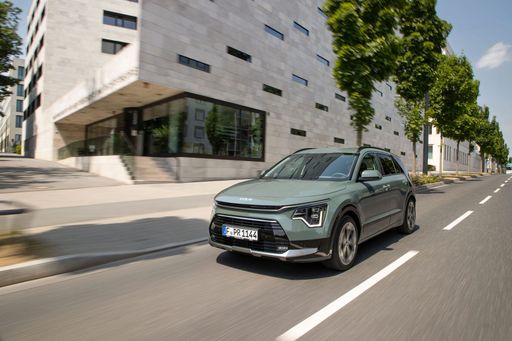 @ press.kia.com
@ press.kia.com
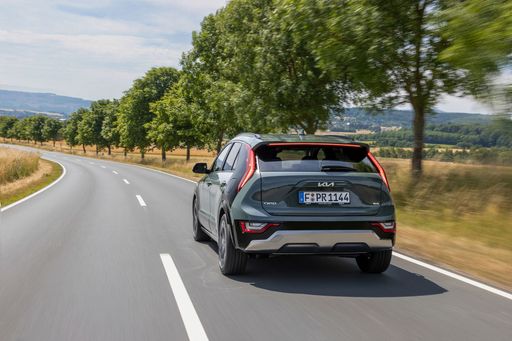 @ press.kia.com
@ press.kia.com
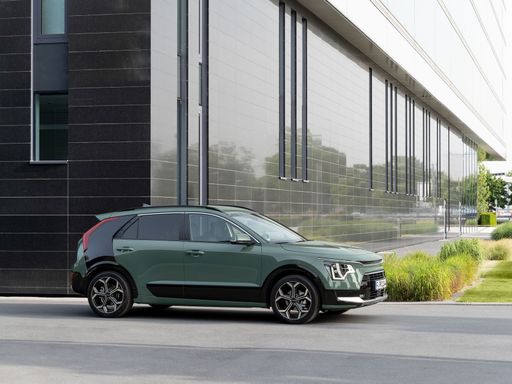 @ press.kia.com
@ press.kia.com
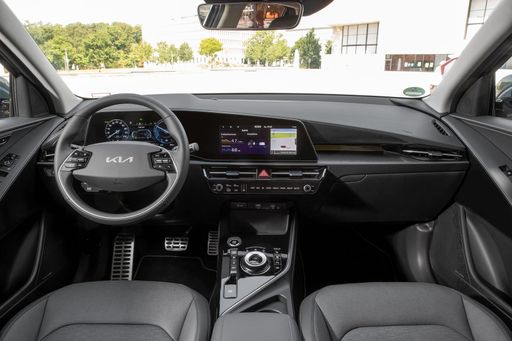 @ press.kia.com
@ press.kia.com
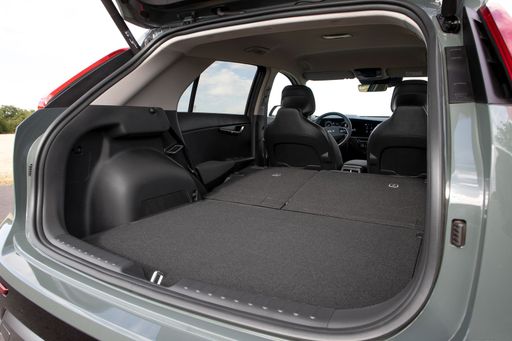 @ press.kia.com
@ press.kia.com
A Tale of Two Kias: Ceed vs. Niro
The automotive world is no stranger to innovations and advancements, and Kia continues to make waves with its dynamic lineup. Among the standout models from this South Korean manufacturer are the Kia Ceed and Kia Niro, both of which bring distinct value propositions to the table. But how do they stack up against each other? Let’s explore the technical nuances and innovations that define the 2024 Kia Ceed and Niro.
Design and Body Type
The Kia Ceed is a quintessential hatchback, boasting compact dimensions with a length of 4315-4325 mm, width of 1800 mm, and height between 1442-1447 mm. It's designed for urban agility and maneuverability with its five-door configuration and sleek aesthetics. On the other hand, the Kia Niro leans into the SUV styling with a bigger frame, measuring 4420 mm in length, 1825 mm in width, and 1545 mm in height. The Niro offers a more commanding road presence and a spacious interior to match.
Engine and Performance
The Ceed is available with petrol mild hybrid (MHEV) and petrol engine configurations. Performance aficionados will find the 100 to 140 HP power output appealing, alongside the option of a dual-clutch automatic or manual transmission with front-wheel drive. The Ceed also boasts an acceleration range of 9.5 to 13.2 seconds from 0 to 100 km/h, and a top speed reaching up to 197 km/h, making it a versatile option for various driving scenarios.
Conversely, the Niro offers eco-conscious consumers the choice between a full hybrid and a plug-in hybrid powertrain. With a power output between 129 and 171 HP and torque of up to 265 Nm, the Niro does not compromise on power. It accelerates from 0 to 100 km/h in 10.4 to 11.3 seconds. Despite a slightly lower top speed of 161 km/h in comparison, the Niro excels in fuel efficiency with a consumption as low as 0.8 L/100 km in its plug-in hybrid variant, supplemented by an electric range of up to 65 km.
Interior and Comfort
Both models ensure a comfortable five-seat layout, suitable for family travels and daily commutes. The Ceed offers a generous trunk capacity ranging from 357 to 395 liters, while the Niro takes a lead with between 348 and 451 liters. The Niro, with its larger dimensions, provides a roomier interior, making it ideal for those requiring more cargo space and passenger comfort.
Technical Innovations
The Kia Niro’s commitment to sustainability shines through its low CO2 emissions, ranging from 19 to 100 g/km. It also comes equipped with a substantial 11.1 kWh battery in the plug-in hybrid version, aligning with modern demands for greener transport solutions.
The Ceed, while more traditional in its approach, offers an engaging driving experience with dynamic handling, aided by its agile hatchback form and powerful engine options. Its focus remains on delivering a sporty yet efficient drive for traditionalists seeking practicality with a punch.
Conclusion
Both the Kia Ceed and Kia Niro come with distinct appeals. The Ceed is for those who appreciate the characteristics of a hatchback with an eye on sporty driving dynamics, while the Niro attracted tech-savvy drivers gravitating towards hybrid technology and larger interior space. In the ever-evolving automotive battle, Kia has carved out robust niches with both models, making the choice highly dependent on individual lifestyle needs and preferences.

|

|
|
|
|
Costs and Consumption |
|
|---|---|
|
Price
23100 - 31300 £
|
Price
28300 - 37800 £
|
|
Consumption L/100km
6 - 6.4 L
|
Consumption L/100km
0.8 - 4.7 L
|
|
Consumption kWh/100km
-
|
Consumption kWh/100km
-
|
|
Electric Range
-
|
Electric Range
59 - 65 km
|
|
Battery Capacity
-
|
Battery Capacity
1.3 - 11.1 kWh
|
|
co2
137 - 146 g/km
|
co2
19 - 107 g/km
|
|
Fuel tank capacity
50 L
|
Fuel tank capacity
37 - 42 L
|
Dimensions and Body |
|
|---|---|
|
Body Type
Hatchback
|
Body Type
SUV
|
|
Seats
5
|
Seats
5
|
|
Doors
5
|
Doors
5
|
|
Curb weight
1298 - 1390 kg
|
Curb weight
1474 - 1594 kg
|
|
Trunk capacity
357 - 395 L
|
Trunk capacity
348 - 451 L
|
|
Length
4315 - 4325 mm
|
Length
4420 mm
|
|
Width
1800 mm
|
Width
1825 mm
|
|
Height
1442 - 1447 mm
|
Height
1545 mm
|
|
Payload
470 - 500 kg
|
Payload
466 kg
|
Engine and Performance |
|
|---|---|
|
Engine Type
Petrol MHEV, Petrol
|
Engine Type
Full Hybrid, Plugin Hybrid
|
|
Transmission
Automatic, Manuel
|
Transmission
Automatic
|
|
Transmission Detail
Automat. Schaltgetriebe (Doppelkupplung), Schaltgetriebe
|
Transmission Detail
Automat. Schaltgetriebe (Doppelkupplung)
|
|
Drive Type
Front-Wheel Drive
|
Drive Type
Front-Wheel Drive
|
|
Power HP
100 - 140 HP
|
Power HP
129 - 171 HP
|
|
Acceleration 0-100km/h
9.5 - 13.2 s
|
Acceleration 0-100km/h
10.4 - 11.3 s
|
|
Max Speed
178 - 197 km/h
|
Max Speed
160 - 161 km/h
|
|
Torque
172 - 253 Nm
|
Torque
265 Nm
|
|
Number of Cylinders
3 - 4
|
Number of Cylinders
4
|
|
Power kW
74 - 103 kW
|
Power kW
95 - 126 kW
|
|
Engine capacity
998 - 1482 cm3
|
Engine capacity
1580 cm3
|
General |
|
|---|---|
|
Model Year
2024
|
Model Year
2024
|
|
CO2 Efficiency Class
E
|
CO2 Efficiency Class
C, B
|
|
Brand
Kia
|
Brand
Kia
|
Kia Ceed
Discovering the Kia Ceed: A Symbol of Modernity
In the dynamic world of automotive engineering, Kia has consistently stood out with its innovative and reliable models. The Kia Ceed is no exception, bringing a blend of efficiency, style, and cutting-edge technology to the table. Let's delve into the details of this eye-catching hatchback and uncover what makes it an alluring choice for modern drivers.
Power and Performance: Under the Hood
The Kia Ceed is equipped with an impressive range of powertrains, offering a selection between petrol engines and mild-hybrid technology. The engine lineup boasts power outputs from 100 to 140 PS, catering to both economical driving needs and those seeking a bit more thrill on the road. The engine choices are complemented by either a smooth manual transmission or a state-of-the-art dual-clutch automatic, ensuring an engaging driving experience tailored to individual preferences.
Efficient and Eco-Friendly Engineering
Kia's dedication to eco-friendliness is evident in the Ceed's engineering, offering remarkable fuel efficiency between 6 to 6.4 L/100km. This focus not only keeps running costs low but also helps reduce emissions, maintaining a responsible footprint with CO2 emissions ranging from 137 to 146 g/km. This efficient performance ensures the Kia Ceed is both a financially savvy and environmentally considerate choice.
Advanced Technologies and Safety Features
Innovation is at the heart of the Kia Ceed's design, with a suite of advanced technological features enhancing comfort and safety. The latest driver-assist systems help keep occupants secure, providing confidence on every journey. Lane Keeping Assist, Forward Collision Warning, and Intelligent Speed Limit Assist are just some of the high-tech features that work seamlessly in the background, making driving both safer and more relaxed.
Styling and Comfort: A Perfect Cabin Space
Stepping into the Kia Ceed, drivers and passengers are greeted by a sophisticated interior, designed for comfort and style. Seen in multiple variants including the Nightline Edition and GT Line, the Ceed offers a premium feel across all its models. With dimensions that promise ample space—stretching up to 4325 mm in length and offering a boot capacity between 357 to 395 L—the Ceed perfectly accommodates both daily commutes and adventurous getaways.
Value for Money: A Wise Investment
Balancing a competitive initial outlay, ranging from €25,590 to €35,090, with low running costs, the Kia Ceed redefines value for money. This hatchback's adaptability to various lifestyle needs, paired with monthly costs from €887 to €1,019, positions it as a wise investment in the current automotive market.
Conclusion: The Kia Ceed in a Nutshell
The 2024 Kia Ceed superbly combines power, efficiency, and cutting-edge innovations, making it a noteworthy contender in the hatchback segment. Whether it’s the eco-friendly credentials, advanced safety systems, or the blend of practicality and style, the Kia Ceed is primed to lead the way in the evolving era of modern vehicles.
Kia Niro
The Evolution of the Kia Niro: A Glimpse into the Future
The Kia Niro has become a symbol of innovation in the hybrid and electric vehicle market. This compact SUV offers a unique blend of efficiency, performance, and style, appealing to a wide range of drivers. Kia Niro's latest model lineup showcases different powertrains, offering consumers choices between full hybrid, plug-in hybrid, and full electric options. These advancements represent Kia's commitment to sustainable mobility and cutting-edge technology.
Performance and Efficiency: Behind the Wheel of the Kia Niro
The performance range of the Kia Niro is impressive, with power outputs ranging from 129 PS in the full hybrid variant to 204 PS in the completely electric version. This ensures that there’s a Niro to meet diverse driving needs and preferences. The acceleration from 0-100 km/h spans between 7.8 to 11.3 seconds across different models, showcasing a balance between efficiency and responsiveness.
Fuel and energy consumption figures are equally commendable. With the hybrid models consuming between 0.8 to 4.4 litres per 100 km and the electric model utilising 16.2 kWh per 100 km, the Kia Niro caters to eco-conscious consumers. Notably, the plug-in hybrid version offers a remarkable electric range of up to 65 km, while the fully electric model boasts an impressive range of 460 km on a single charge.
Innovative Features for Today’s Driver
Kia has equipped the Niro with state-of-the-art features aimed at enhancing the driving experience. The latest models come with advanced driver assistance systems, ensuring safety and convenience. These include lane-keeping assist, adaptive cruise control, and collision avoidance technologies that set a high standard in the compact SUV class.
The Niro also benefits from a sleek infotainment system featuring a high-resolution display, offering seamless connectivity with features like Apple CarPlay and Android Auto. This keeps drivers connected while minimising distractions, creating an optimal driving environment.
Design and Practicality: A Perfect Balance
The Kia Niro stands out with its aerodynamic design, which is both aesthetically pleasing and practical. The dimensions of the vehicle – 4420 mm in length, 1825 mm in width, and a height ranging from 1545 to 1570 mm – provide ample space for passengers and cargo. The boot capacity ranges from 348 to 475 litres, catering to those who require versatility for their lifestyle or family needs.
The Niro’s cabin is crafted with a focus on comfort and usability, incorporating high-quality materials and an intelligent layout that complements its sophisticated exterior.
Sustainability and Cost Efficiency
The Kia Niro reflects Kia's dedication to improving environmental performance. The CO2 emissions spectrum, ranging from 0 to 100 g/km depending on the powertrain, highlights the vehicle's eco-friendly credentials. For those particularly conscious of their environmental footprint, the electric and plug-in hybrid models offer substantial reductions in emissions.
In terms of cost, the Niro offers competitive pricing from €32,790 to €47,590, and operational costs ranging from €928 to €1,101 per month. The Niro also maintains a reasonable cost per kilometre, between 37.1 to 44.1 cents, making it an economically sound choice in the long run.
Conclusion: The Future is Bright for Kia Niro
The Kia Niro stands as a testament to Kia’s innovative spirit and commitment to providing eco-friendly and technologically advanced vehicles. Its blend of performance, efficiency, and innovative features make it a compelling option for those seeking a future-focused SUV. As Kia continues to evolve, the Niro remains a leading example of how the brand is shaping the future of driving.
The prices and data displayed are estimates based on German list prices and may vary by country. This information is not legally binding.
